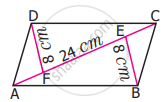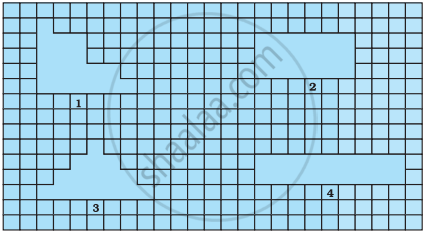Advertisements
Advertisements
Question
Find the height of the parallelogram whose base is four times the height and whose area is 576 sq.cm
Solution
Let the height be ‘A’ and base be ‘h’ units
Given b = 4 × h
Area of the parallelogram = 576 sq.cm
b × h = 576
4h × h = 576
h × h = `576/4` = 144
h × h = 12 × 12
h = 12 cm
Height = 12 cm, base = 4 × 12 = 48 cm
APPEARS IN
RELATED QUESTIONS
A parallelogram has sides of 15 cm and 12 cm; if the distance between the 15 cm sides is 6 cm; find the distance between 12 cm sides.
Suresh on a parallelogram-shaped trophy in a state level chess tournament. He knows that the area of the trophy is 735 sq.cm and its base is 21 cm. What is the height of that trophy?
What happens to the area of the parallelogram if the base is increased 2 times and the height is halved?
In a parallelogram the base is three times its height. If the height is 8 cm then the area is
If the base and height of a parallelogram are in the ratio 7 : 3 and the height is 45 cm, then fixed the area of the parallelogram
Find the area of the parallelogram ABCD if AC is 24 cm and BE = DF = 8 cm
Observe the shapes 1, 2, 3 and 4 in the figures. Which of the following statements is not correct?

To find area, any side of a parallelogram can be chosen as ______ of the parallelogram.
Altitudes MN and MO of parallelogram MGHK are 8 cm and 4 cm long respectively in the below figure. One side GH is 6 cm long. Find the perimeter of MGHK.

ABCD is a parallelogram in which AE is perpendicular to CD as shown in the given figure. Also, AC = 5 cm, DE = 4 cm and area of ΔAED = 6 cm2. Find the perimeter and area of parallelogram ABCD.
